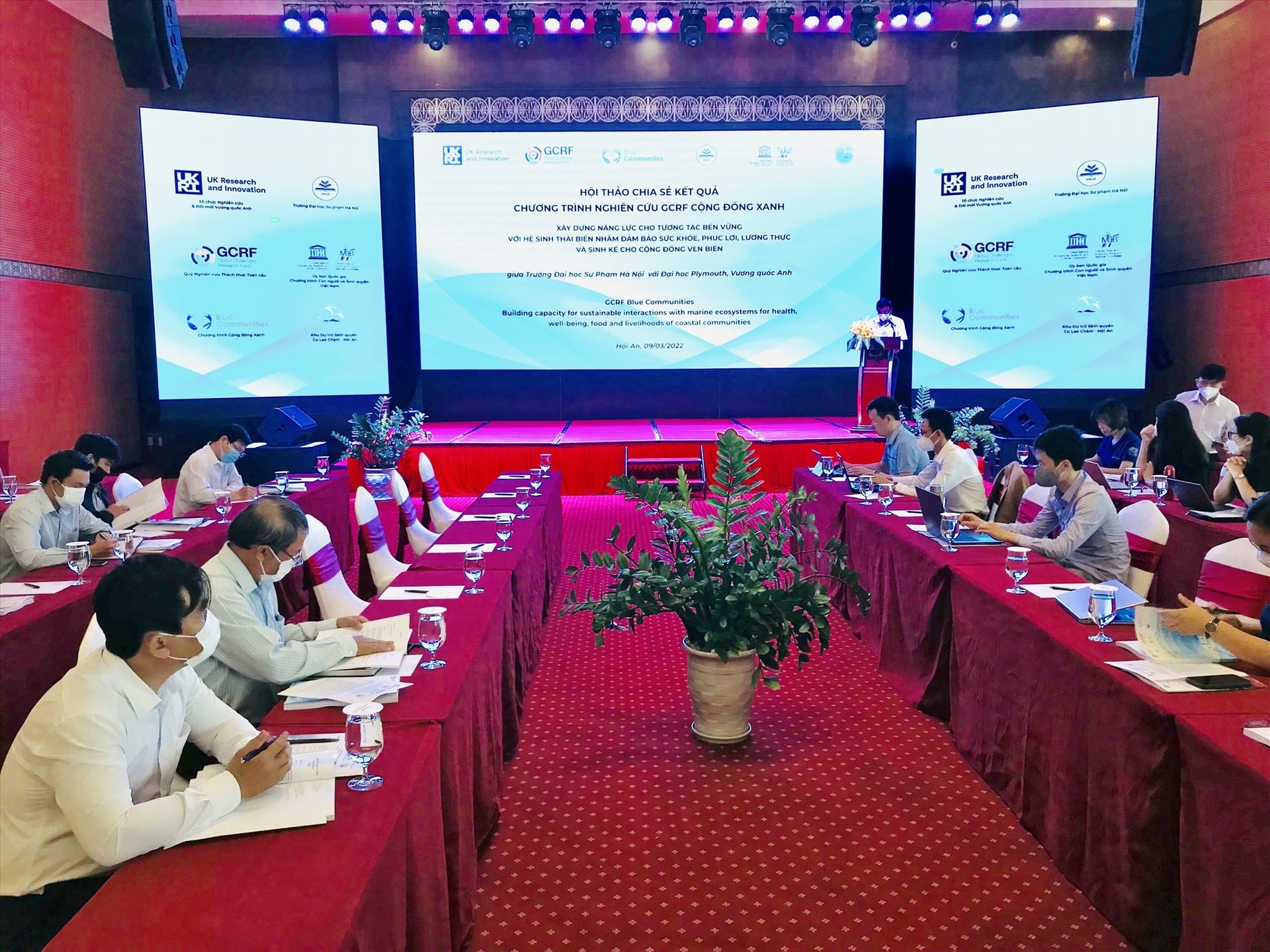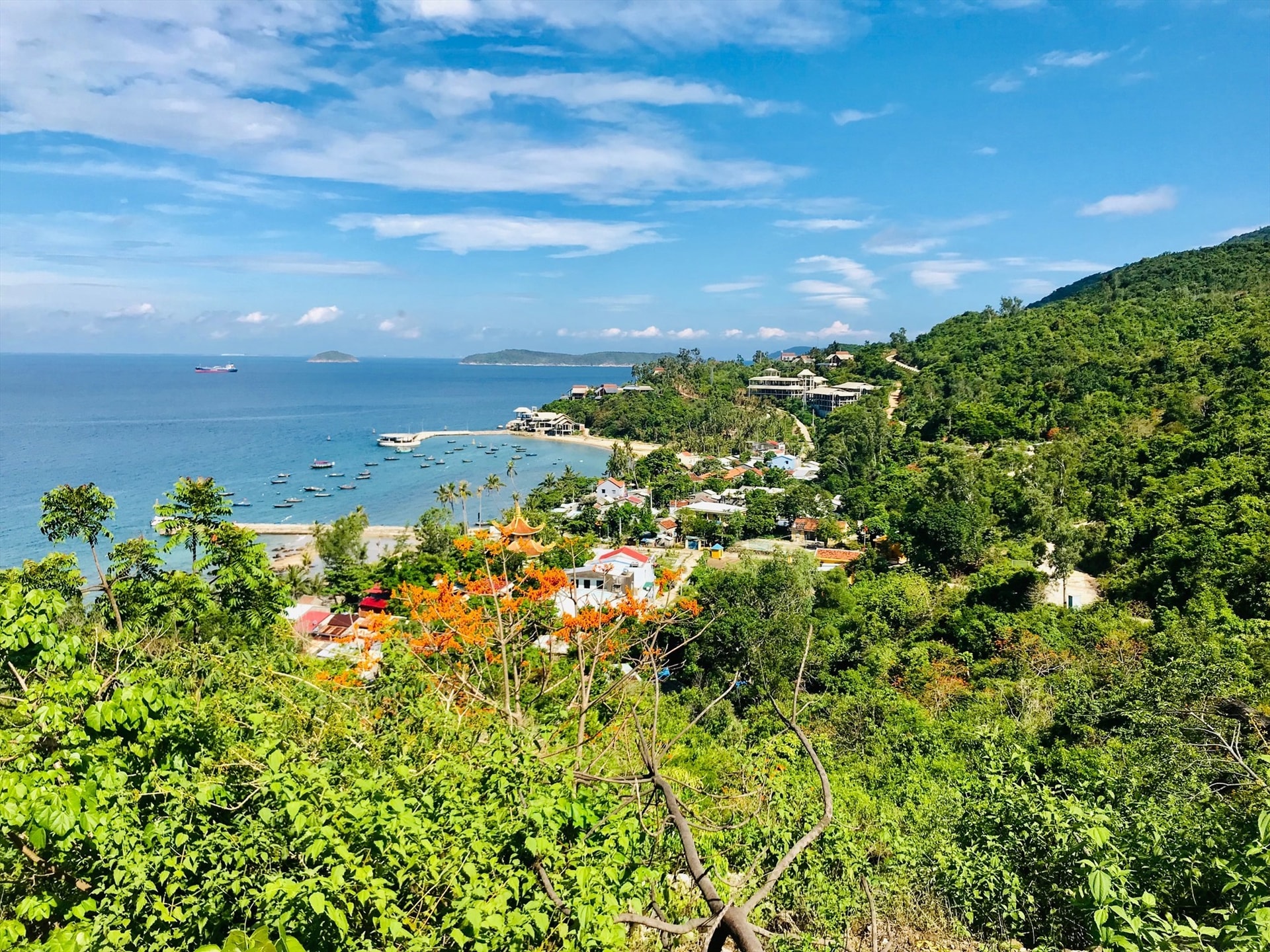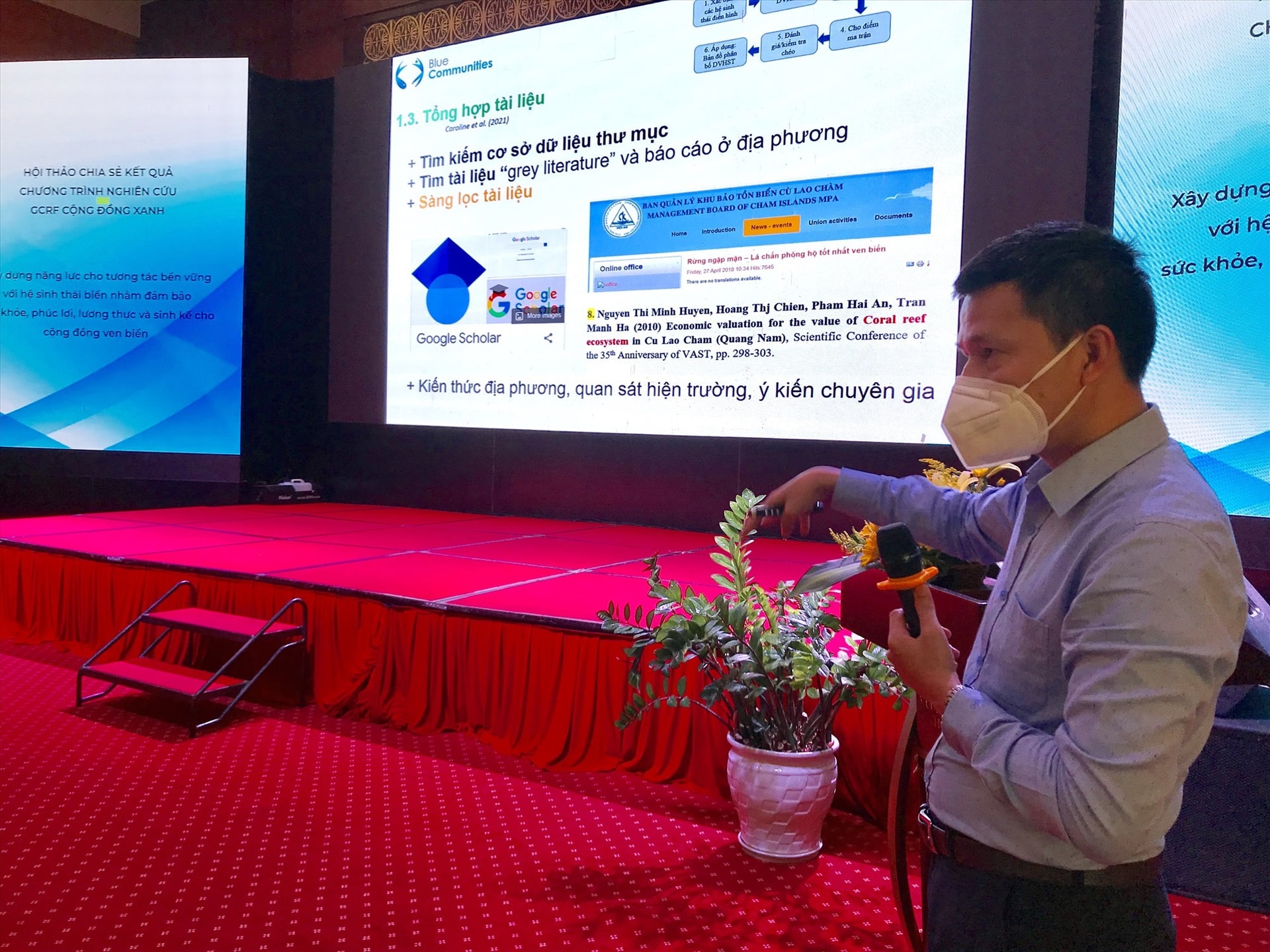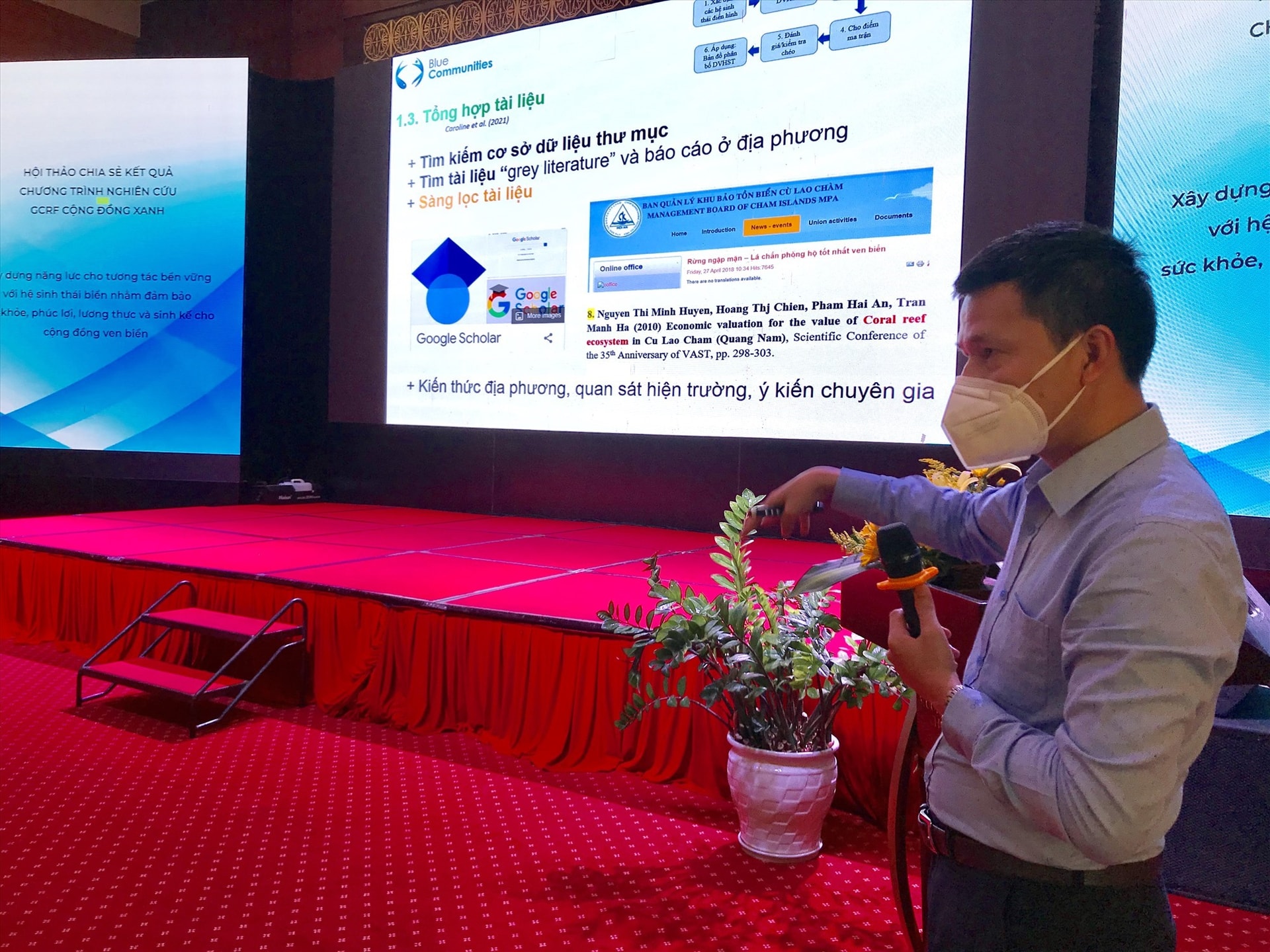Building capacity for sustainable interactions with Cu Lao Cham marine ecosystems
(QNO) - A workshop on GCRF Blue Communities research programme of building capacity for sustainable interactions with marine ecosystems for health, wellbeing, food and livelihoods of coastal communities has recently been held in Hoi An city (Quang Nam province).

The program is funded by the Global Challenges Research Fund (GCRF) under the UK Research and Innovation, supported and prioritized by UNESCO.
It has jointly been implemented by the Western Philippines University, National University of Indonesia, Hanoi National University of Education, the University of Exeter, the University of Plymouth, and Plymouth Marine Laboratory (UK).
The GCRF Blue Communities research programme is involved in different problems of future effects of climate change, current governance, fishery, aquaculture, tourism, and health, wellbeing, and livelihoods of coastal communities.

8 components of the programme implemented in the Hoi An- Cu Lao Cham World Biosphere Reserve since 2018 consists of benefits and risks to coastal lives, scenarios of marine resources, adaptation to climate change, and marine spatial planning for Cu Lao Cham biosphere reserve management.
The programme has great significance to the preservation and development of the Hoi An- Cu Lao Cham Biosphere Reserve.
The research findings provided necessary data for the biosphere reserve conservation and development.


At the same time, the workshop gave local authorities several recommendations about continuously building capacity for sustainable interactions with Cu Lao Cham marine ecosystem in Hoi An. Hoi An - Cu Lao Cham World Biosphere Reserve covers an area of 33,475 hectares, including the core, buffer and transition zones.
